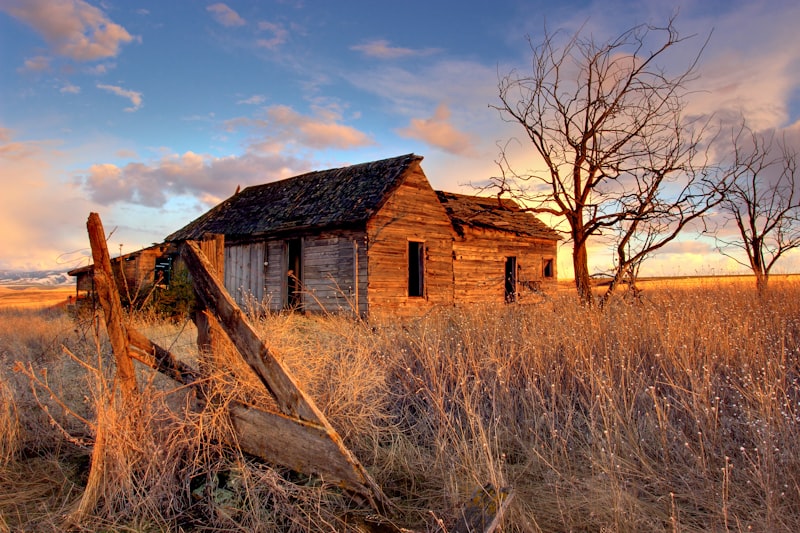Have you ever wondered which country Joya de Cerén is located in? Well, prepare to be amazed by this captivating archaeological site nestled in the heart of El Salvador. Joya de Cerén, often referred to as the “Pompeii of the Americas,” offers a unique glimpse into the daily life of the ancient Maya civilization.
Step back in time and imagine yourself walking through the vibrant streets of Joya de Cerén over 1,400 years ago. This UNESCO World Heritage Site provides an extraordinary window into the past, offering a well-preserved snapshot of ancient Mesoamerican culture. But where exactly is it?
Joya de Cerén is situated in the modern-day country of El Salvador, a hidden gem of Central America. This small yet culturally rich nation is brimming with historical sites and natural wonders. Among them, Joya de Cerén stands out as an invaluable archaeological treasure.

The significance of this site lies in its exceptional state of preservation. Buried beneath layers of volcanic ash for centuries, Joya de Cerén remained remarkably intact until its accidental discovery in 1976 during construction work. The ash acted as a natural time capsule, preserving not only structures but also everyday objects, crops, and even foodstuffs.
Imagine exploring the remains of ancient houses, workshops, and communal spaces, all frozen in time. You can almost hear the echoes of the past as you walk through the narrow pathways and witness the remnants of a once-thriving village. Joya de Cerén offers a unique opportunity to immerse yourself in the daily routines and rituals of the Maya people.
So, whether you’re an avid history enthusiast, an archaeology aficionado, or simply someone seeking a remarkable adventure, Joya de Cerén in El Salvador should be at the top of your travel bucket list. Delve into the mysteries of the past, as this exceptional site unveils its secrets and captivates all who visit.

Embark on a journey to Joya de Cerén, where history comes alive amidst the lush landscapes of El Salvador. Uncover the wonders of a bygone era and let your imagination run wild. Join the ranks of explorers who have marveled at the beauty and significance of this extraordinary archaeological gem. The ancient Maya await your arrival!
Unearthing Ancient Civilization: Joya de Cerén, the Pompeii of the Americas, Discovered in El Salvador
Have you ever wondered what life was like centuries ago? How ancient civilizations thrived and built their communities? Well, get ready to be amazed because a remarkable discovery has brought to light an extraordinary settlement from the past. Meet Joya de Cerén, often referred to as the Pompeii of the Americas, located in El Salvador.
Joya de Cerén provides us with a unique glimpse into the daily lives of the people who inhabited this pre-Columbian village over 1,400 years ago. Unlike other ancient sites, such as majestic pyramids or grand temples, Joya de Cerén offers a more intimate view of everyday existence.
Imagine walking through this time capsule and witnessing how these ancient people cooked their meals, tended to their crops, and conducted their daily routines. Thanks to the volcanic ash layers that preserved the village, we can now study the minutiae of their lives with astonishing detail.
Dubbed the “Pompeii of the Americas,” Joya de Cerén shares similarities with the famous Roman city destroyed by Mount Vesuvius in 79 AD. Just like Pompeii, Joya de Cerén was also preserved by volcanic ash, giving archaeologists an exceptional opportunity to uncover a fully intact ancient civilization.
What sets Joya de Cerén apart is its accessibility. While Pompeii requires extensive excavation, Joya de Cerén is easily reachable, allowing visitors to experience history firsthand. Strolling through the narrow streets, admiring the modest dwellings, and exploring the communal buildings, you can’t help but feel a profound connection to the past.
This archaeological site has not only fascinated historians and archaeologists but also captivated the imagination of travelers seeking a one-of-a-kind adventure. It serves as a testament to the resilience and ingenuity of our ancestors, showcasing the rich tapestry of human history.
So, if you’re a history enthusiast or simply curious about ancient civilizations, Joya de Cerén is a must-visit destination. Prepare to be transported back in time as you uncover the stories hidden within its well-preserved ruins. Immerse yourself in a world that once thrived, and let the echoes of the past amaze and inspire you.
El Salvador’s Hidden Gem: Joya de Cerén Reveals Insights into Pre-Columbian Life
Nestled amidst the lush landscapes of El Salvador, there lies a hidden gem that offers a captivating glimpse into the rich tapestry of pre-Columbian life. Joya de Cerén, often referred to as the “Pompeii of the Americas,” unveils a remarkable story of an ancient civilization frozen in time. Step back in history and embark on a journey through the remnants of this extraordinary archaeological site.
Imagine walking through the remains of a 1,400-year-old village, where daily routines and rituals unfolded centuries ago. As you explore Joya de Cerén, you’ll discover the remarkably preserved structures that once housed the thriving Mayan community. These well-preserved buildings provide an unparalleled window into the daily lives of the people who called this place home.
The unique aspect of Joya de Cerén lies in its exceptional state of preservation. Buried under layers of volcanic ash from the nearby Loma Caldera eruption in AD 600, the village was protected from decay and destruction. This serendipitous event allows archaeologists today to decipher the minutiae of everyday life, from cooking techniques to agricultural practices.
One step into the village, and you’ll be transported back in time. The residential houses, with their thatched roofs and adobe walls, offer insights into ancient architecture and construction methods. You can almost hear the echoes of children playing and smell the aromas of traditional meals wafting through the air.
What truly makes Joya de Cerén an archaeologist’s dream is the wealth of artifacts found within its borders. Intricately crafted pottery, tools, and agricultural implements give us a glimpse into the daily activities that sustained this community. From farming to weaving, the villagers’ ingenuity and craftsmanship come to life through these tangible remnants of the past.
As you wander through Joya de Cerén, take a moment to ponder the resilience and ingenuity of those who inhabited this ancient village. Imagine the bustling marketplace, the laughter of children, and the deep-rooted traditions that shaped their lives. Joya de Cerén invites you to witness the vibrancy of a long-lost civilization and to appreciate their contributions to our shared human history.
Unearth the secrets of El Salvador’s past and immerse yourself in the captivating world of Joya de Cerén. This hidden gem provides a unique opportunity to connect with our ancestors and gain insights into a pre-Columbian way of life that continues to inspire awe and admiration.
Lost City Awakens: Joya de Cerén Sheds Light on Mesoamerican History
Have you ever wondered what it would be like to travel back in time and witness ancient civilizations firsthand? Well, prepare to be amazed as we delve into the captivating story of Joya de Cerén, a lost city that awakens our curiosity and sheds light on Mesoamerican history.
Buried under layers of volcanic ash for centuries, Joya de Cerén is often referred to as the “Pompeii of the Americas.” Located in El Salvador, this archaeological site offers a unique glimpse into the daily life of the Maya civilization. Unlike other grand cities known for their monumental architecture, Joya de Cerén provides an intimate snapshot of a small farming village frozen in time.
As you explore the remains of this ancient settlement, you’ll find remarkably preserved structures that transport you back to the 6th century AD. The houses, workshops, and communal areas reveal the daily routines and activities of the Maya people. It’s as if time has stood still, offering us a rare opportunity to connect with our ancestors and understand their way of life.
But what truly sets Joya de Cerén apart is its remarkable state of preservation. Thanks to the eruption of the nearby Loma Caldera volcano around AD 600, the city was buried under a thick layer of volcanic ash, acting as a natural time capsule. This sudden disaster, while devastating for the inhabitants, ultimately became a blessing for archaeologists, allowing them to uncover a wealth of valuable artifacts and insights.
By meticulously studying the artifacts and structures found at Joya de Cerén, researchers have gained invaluable knowledge about the everyday lives, agriculture practices, and social hierarchy of the Maya people. From agricultural tools and pottery to religious artifacts, each discovery contributes to our understanding of Mesoamerican civilization.
Visiting Joya de Cerén is not only a journey through time but also an opportunity to appreciate the resilience and ingenuity of the ancient Maya. It serves as a reminder that even in the face of natural disasters, human civilizations have the ability to adapt and endure.
So, if you’re ready to embark on a captivating adventure and witness history come alive, make sure to include Joya de Cerén in your travel plans. This lost city invites us to unravel the mysteries of Mesoamerican culture and fosters a deep appreciation for the rich tapestry of human history. Get ready to be awestruck as you step into the vibrant past of Joya de Cerén, where an ancient civilization awaits your discovery.
Time Capsule Unveiled: Joya de Cerén Provides Glimpse into Maya Civilization
Have you ever wondered what life was like for the ancient Maya civilization? Imagine being able to step back in time and witness their daily routines, traditions, and way of life. Thanks to the remarkable archaeological site known as Joya de Cerén, this fascinating window into the past has been unveiled.
Located in present-day El Salvador, Joya de Cerén is often referred to as the “Pompeii of the Americas.” Why? Because it offers an extraordinary glimpse into the daily lives of the common people who inhabited this ancient village nearly 1,400 years ago. Frozen in time by a volcanic eruption, this remarkably well-preserved site has captivated archaeologists and history enthusiasts alike.
When you visit Joya de Cerén, you are transported to a world that existed centuries ago. The site reveals a compact farming village that flourished during the Late Classic period of Maya civilization. Unlike other grandiose Maya cities, Joya de Cerén provides insight into the ordinary lives of the Maya people, showcasing their houses, kitchens, workshops, and even their sacred spaces.
One of the most striking aspects of Joya de Cerén is its level of preservation. The volcanic ash that covered the village acted as a natural time capsule, protecting it from the ravages of time. As a result, artifacts such as pottery, tools, and household items have survived, allowing us to piece together a vivid picture of everyday life in ancient Maya society.
While Joya de Cerén lacks monumental architecture or intricate artwork, its value lies in its ability to transport us to a time long gone. It allows us to appreciate the resilience and ingenuity of the Maya people, who thrived in a challenging environment. From farming techniques to dietary practices, the site provides a wealth of information about their self-sufficient way of life.
By exploring Joya de Cerén, we can better understand the Maya civilization and appreciate their rich cultural heritage. The site serves as a reminder that history is not solely made up of grand palaces and imposing monuments but also the humble dwellings and daily routines of ordinary people.
Joya de Cerén is a time capsule that has unlocked a wealth of knowledge about the ancient Maya civilization. Stepping into this preserved village allows us to witness firsthand the lives and struggles of a remarkable civilization that flourished centuries ago. Visit Joya de Cerén and embark on a journey through time, where the echoes of the past resonate in the present.